The prototype DKR: Where do we stand now? Peter Yim, Bootstrap Institute. 1.* - unedited transcript - Okay. I'm going to sort of take off my futurist hat and try being a sort of system manager for a while. Maybe you want to ask, "What are you trained in?" I wasn't trained in any of those. I was basically trained as an operations researcher, an industrial engineer, and then in business school, in organizational behavior and personnel management at that time. I guess you'd call it "human resources" now. But I've been with systems a long time. I've been an entrepreneur, started companies, ran a software factory that had like 250 programmers. And so, I find it a challenge to try to sort of get things going in a way that maybe would come slightly closer to what Doug wants.
So, going back to this slide, I mean, this is what he terms as the DKR.
It's the set of recorded dialog, intelligence collection, and Knowledge
Product. And I understand from Doug, and from Marcello-I get highly enlightened
these few days that I've been trying to put this together--that this whole
thing is an interactive process, with multiple feedback loops.
So, this is sort of the prototype, at least the basic pieces, that I believe needs to be put together. We had a team, some of our members are here-Frode, Tanya, Shinya over there, and Doug, Norm Hardy, and a whole bunch of people working with us. Essentially we need to put together a front end, a back end, some processes to get us started, seed contents, services, and architecture-eventually, I mean, we don't have one put together-and then, a current status. What is a current status? That's Doug's terminology-I mean, his terminology, his handbook-but then could be an encyclopedia, goals, plans, and comments.
But essentially, this is another view of how. We've got an external
environment, inputs in terms of and dialog and intelligence collections,
some sort of an integration process, and then, sort of a knowledge product
with a status, constantly available and dynamically changing. We've got
the user-interface systems that would provide different views for different
users. And this whole thing in the box is the DKR, and the process of it-the
concurrent development, integration, and application of it, this Doug's
CoDIAK. Sometime in September, Doug and Christina drew on the board what
they wanted.
We could put these requirements on the web for everyone. But essentially they got like: open, evolvable, integratable, cross-platform, scalable, persistent knowledge base, persistent interlinking, provision for migration-I mean, it has to be off the shelf, but then it's migratable into something; it goes on. And, I tried to mimic those things by trying to grab what we have that's off the shelf to, at least, get us started. So far we've got at least the input part of it in place, hopefully.
And this is where we stand. I mean, we've got the Bootstrap and Colloquium participant community here. And then, of course, we've got our colloquium session, which is offered on campus, on the web, over microwave television. And then, with each session, we've actually got like Doug's talk, some guest speakers, live participants, and with those, we actually have three products that are coming out. We've got audio-visual that's archived, that's available as archived on the net. We've got slides that are coming alongside with them. And then, we're actually going to have transcripts of all the conversation, all the dialog. Eventually we might even work on synchronizing all of those. And then, most of you are probably aware that we've got a weekly questionnaire with some questions related to each session and some requests for feedback. And then, we've also put together an online forum, under the mailing list, called unrev-II@onelist.com and that's the sort of the user interface that you're seeing. Behind unrev-II, actually we're sending it through hyper mail so that each episode of the discussion is now sort of converted to HTML and they are all linkable. This is sort of how the AVD and the archived colloquium looks like-for those of you who've been on the web cast, that's what you'd get, I mean, on a good day.
And, going to the online forum, for those of you who have joined, this
is the sort of off-the-shelf, free of charge, live with the advertisement
type mailing list platform that we are sending people to. Why are we doing
it? We're doing it because they've got administrative services that will
save us a lot of time in providing our own. What else do we do with it?
Of course, it provides threaded discussions. It supports link contribution; any user can submit links that are sharable. People can upload files to the shared space, file space. And then, it provides a polling and survey capability. And as I mentioned, we are making it linkable via hyper mail. So, all the episodes of the discussion will be available as linkable hyper documents.
This is the screen-I don't think anybody has any submitted links yet. I mean, this is the screen where you could be submitting links.
This is one screen that is sort of put together for people to submit sharable files. Hilary Lamont, our online TA, who's also coordinating the online content on the DKR, actually has opened up various folders. Like, I mean: one folder for the NIC"s frontier, one folder for augmenting organizational intelligence, organizational capabilities, one folder for leveraging our collective intelligence, and so on. I mean, roughly corresponding to the weekly sessions that we are topic under.
This is another screen, a survey screen that the list owner can actually
be sending out surveys on email.
This is the screen where we have most of the online discussions captured, by virtue of the use of hyper mail. Unrev II is sort of all the threaded discussions available and could be sorted by thread, by user, by sender, by dates, and so on.
So, what else? The weekly questionnaire-a lot of you are familiar with this screen. What we have put together after each session-this week's questionnaire will probably be out tomorrow-I mean, we will have a questionnaire that pertains to each session. And, for those of you who have answered the previous surveys, or questionnaires, you will notice that an online feedback is available instantaneously.
The verbatim replies are taken out, I mean, we still need some processing
probably to put them online for everybody's reference. So far, we've put
it away in lack of the sort of enough bandwidth to deal with them, but
it will be available soon. So, what are the seed contents? I mean, Doug
was showing us the Bootstrap library of all the documents that have been
developed through the years, I mean, starting as early as the '62 paper.
The Bootstrap library will be available on the unrev-II postings, will
be available-actually you could now access it through the dougengelbart.org/colloquium/forum/discussion.
This area is password protected for all of you who have access to the web
cast and you have access to this directory. It's the same pair of use name
password that allows you to get into the web cast. The reason why we are
doing it is a lot of people are using their real name, and we'd just hate
to have some spammer come in and mine the whole mailing list of the community.
So, it's under sort of a fairly simplistic authentication process. We will
be making excerpts from the 1999 State of the Future Report available I
promise staff that will get it on the off-line format so that it will be
anchored and addressable, not in terms of the document, but in terms of
every single paragraph. The State of the Future Report is a very dense
document; and I think it give a good demonstration of the real need to
access inside the document-rather than just telling people "this is the
URL for the document." When it's a 50-page document, it's close to being
meaningless. Responses to questionnaires, as I said, that will be made
available once the team or some of us have the time to work on it. Services
that we are getting between ourselves, and a lot of it is supplied by the
ONElist mailing list, is like membership administration.
There's a group calendar, which also provides a reminder. For those
of you who have actually signed up on the unrev-II mailing list, you probably
got a reminder yesterday telling you that the session is on today. I mean,
that's automatic; it saves us a lot of time. Survey and Poll results, again.
And, Shinya, over there, has just put together our search capability. And,
once that's becoming available, we'll be advising everyone through the
website. The search would be for the colloquium sites, the DKR site, and
the library site. The DKR site is password protected; the colloquium and
the library sites will be publicly accessible. Of course, the Bootstrap
site will be open and available. That's sort of the membership screen.
That's the calendar screen. And, where do we stand now? At the colloquium
last week I was telling everyone that we had like 987 registrants; as of
yesterday, we've got 1,243 registrants. On campus we've got like maybe-the
first session we got a big crowd, about 85 people. We were sort of overwhelmed-this
room. Session two and today we've got roughly about 50 people. We've got
about 100 people responding to the first web cast survey. I mean, that
was a test and also a drive to try to help people get onto the web cast
smoothly. We've got about 94 people responding to the first session questionnaire,
and 71 to the second session questionnaire. 120 people have joined the
online forum now, of which 24 of them have made postings-I mean, sort of
a total of some 64 postings, 61 was the count as of last night. Obviously
there is a discrepancy between registrants and the people who have joined
the community. So, since I am online, I would like to sort of call to everyone
who has registered for the course, that participation through the online
forum is very useful and will probably be a part of active participation.
So, please join us there. Also, filling in the survey is a requirement
for the course. So please take note.
So, what do we need? Doug was saying we need a lot of support. I mean, obviously, we need content contribution-I mean, there will be no dialog if nobody speaks up. And then, pass that, we need administrative support: maintenance, database, and version control system. We need architecture and design ideas. We have actually formed two teams in preparation for the colloquium. One we call the infrastructure development team, which looks at the technology and processes-which Frode, and Tonya over there is part of the team, Shinya, too. And then, we need a content development team. We've got Hilary, Marcelo with this team, we need people who work on the knowledge. If we were to come up with a handbook, or an encyclopedia like knowledge product, we need people to be editors, I mean, to filter and integrate those knowledge. So, essentially, that's where we stand in regards to the prototype DKR. Back to Doug.
---
Above space serves to put hyperlinked
targets at the top of the window
|

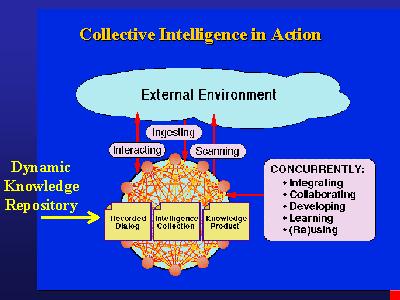 Fig. 1
Fig. 1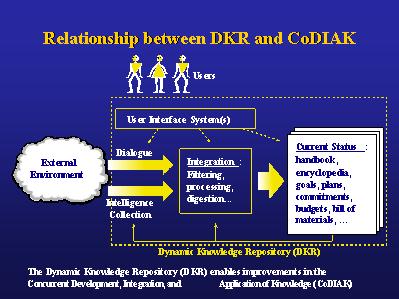 Fig. 2
Fig. 2 Fig. 3
Fig. 3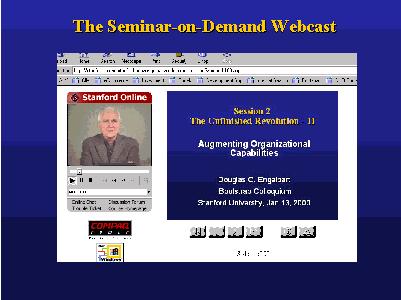 Fig. 4
Fig. 4
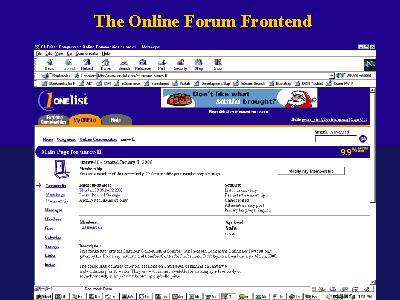 Fig. 5
Fig. 5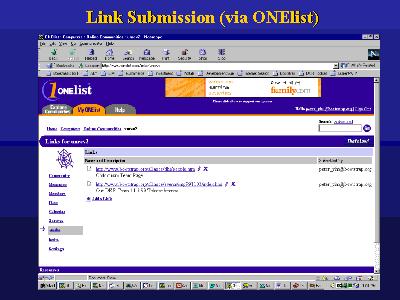 Fig. 6
Fig. 6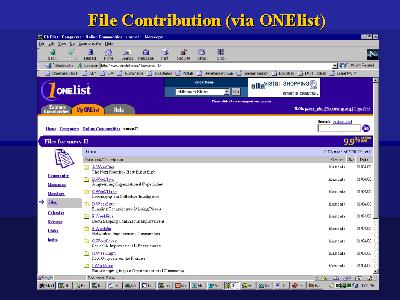 Fig. 7
Fig. 7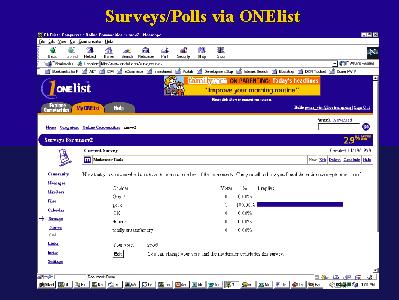 Fig. 8
Fig. 8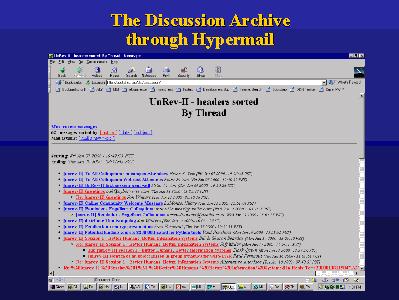 Fig. 9
Fig. 9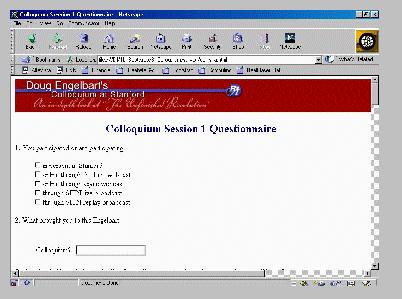 Fig. 10
Fig. 10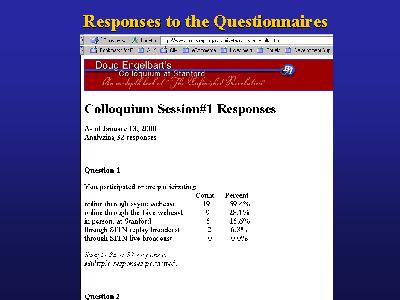 Fig. 11
Fig. 11